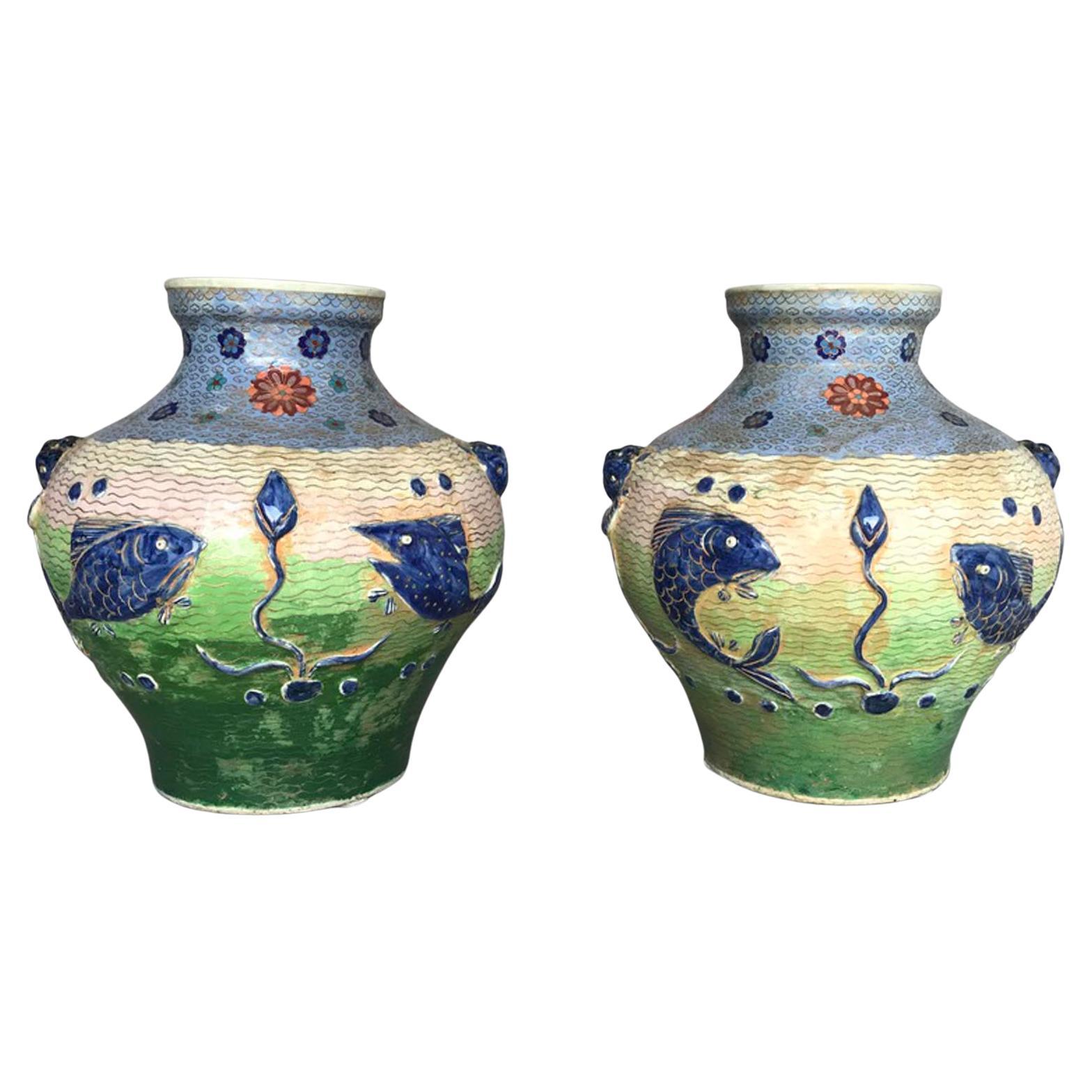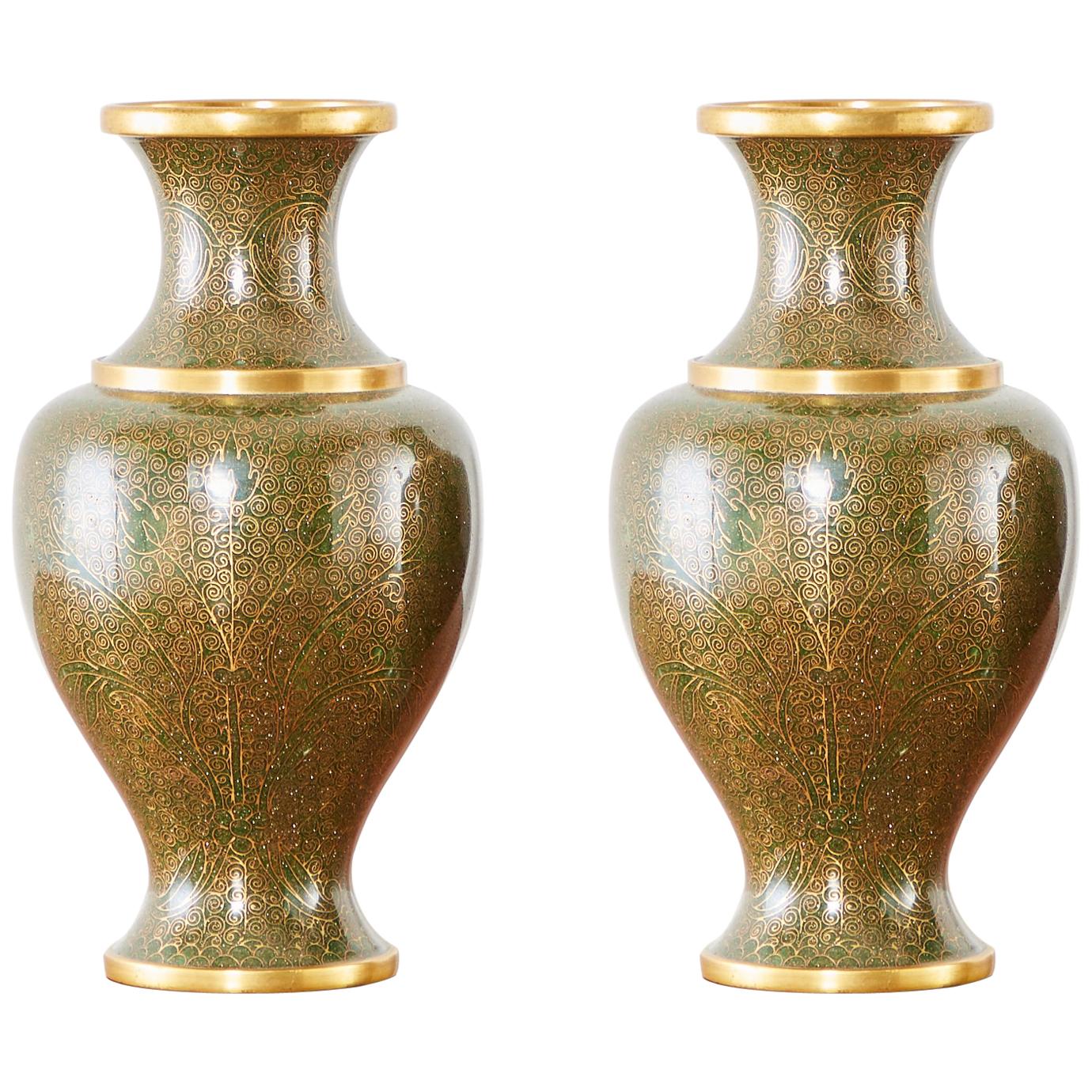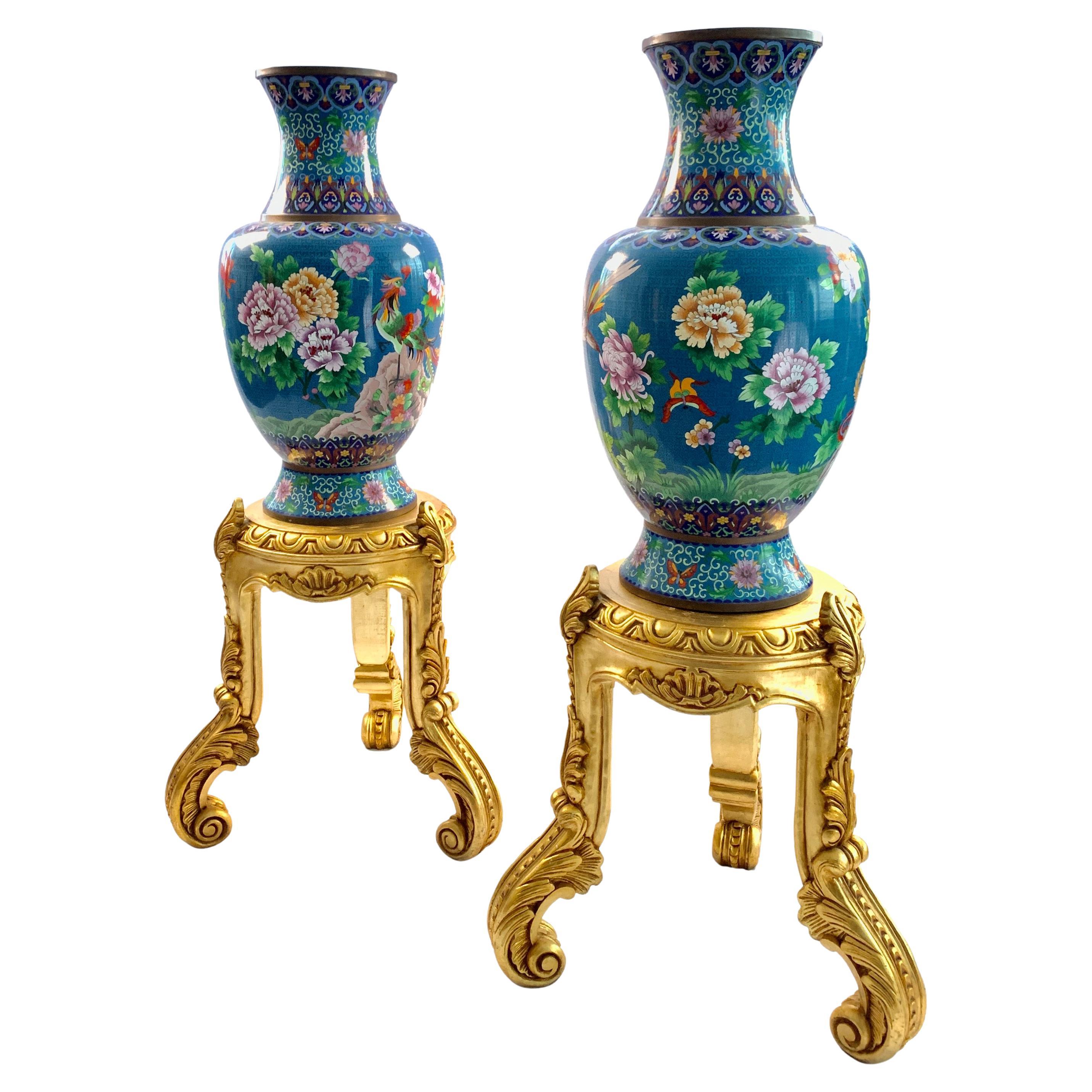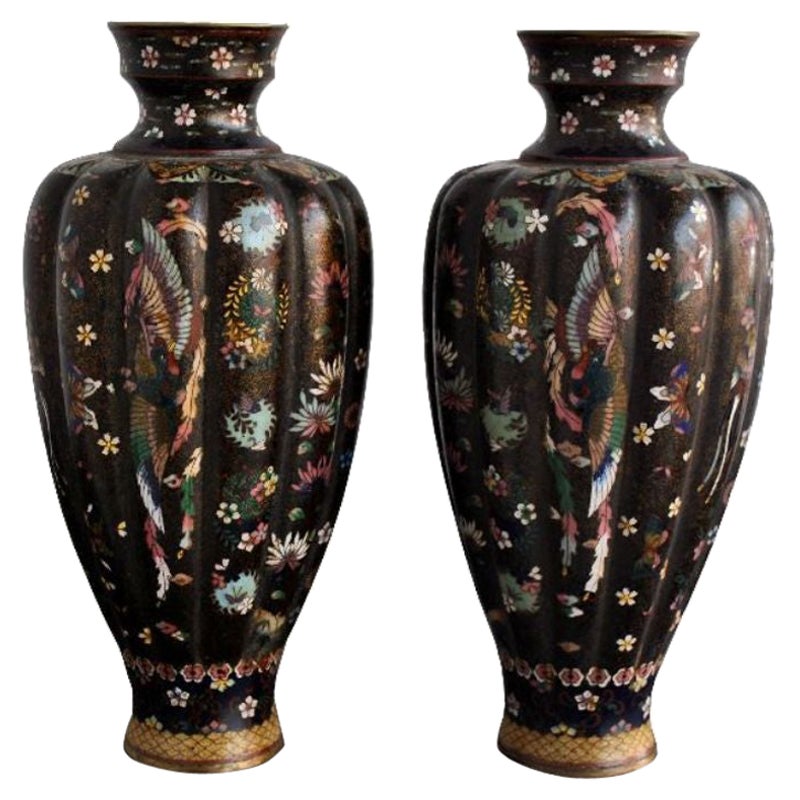Items Similar to Pair of Antique Chinese Cloisonné Vases
Want more images or videos?
Request additional images or videos from the seller
1 of 10
Pair of Antique Chinese Cloisonné Vases
About the Item
A pair of Chinese enamel vases with elephant head handles. Decorated with a cloisonné phoenix and flower motif. Cloisonné is an ancient technique used to decorate metalwork with inlays of enamel. By soldering thin wires of silver, gold or copper to the base metal, different compartments can be separated. These compartments are then filled with enamel and buffed back. This process is repeated several times to achieve rich coloring and a smooth finish. Seal on the bottom is a single character: Sei, meaning worked with much detail and pure or excellent.
- Dimensions:Height: 18.25 in (46.36 cm)Diameter: 7 in (17.78 cm)
- Sold As:Set of 2
- Materials and Techniques:Enamel,Cloissoné
- Place of Origin:
- Period:
- Date of Manufacture:circa 1900
- Condition:Most items that are 100 years old have been cleaned or polished in their lifetime. More involved restorations are mentioned in the above description. For a detailed condition report and a video of this item please contact us directly. -Naga Antiques.
- Seller Location:Hudson, NY
- Reference Number:
About the Seller
5.0
Recognized Seller
These prestigious sellers are industry leaders and represent the highest echelon for item quality and design.
Established in 1971
1stDibs seller since 2008
150 sales on 1stDibs
Typical response time: 4 hours
Associations
The Art and Antique Dealers League of AmericaAntiques Associations Members
- ShippingRetrieving quote...Ships From: Craryville, NY
- Return PolicyThis item cannot be returned.
More From This SellerView All
- Very Large 19th Century Japanese Cloisonné Bronze Vase with MagnoliasLocated in Hudson, NYVery Large 19th Century Japanese Cloisonné Bronze Vase with a parrot in a magnolia tree.Category
Antique 19th Century Japanese Vases
MaterialsBronze
- Chinese 18th Century Bronze VaseLocated in Hudson, NYChinese 18th century bronze vase with mottled patina. Evidence of a small, old repair.Category
Antique 18th Century Chinese Metalwork
MaterialsBronze
- Pair of Japanese Large Bronze Vases with Turtles and CranesLocated in Hudson, NYEarly Meiji period (1868-1912) bronze vases, incised, detailed designs on each vase. One vase is decorated with a family of cranes at a rocky water's edge, with flowers and an old pine tree. The other vase depicts turtles at a rocky water's edge with bamboo, along with turtles swimming...Category
Antique Late 19th Century Japanese Meiji Metalwork
MaterialsBronze
- Antique Japanese Bronze Vase with Landscape and Red PatinaLocated in Hudson, NYAntique Japanese bronze vase with landscape and red patina, Meiji Period (1868-1912) bronze vase with wild grasses under a silver moon. Re...Category
Antique Late 19th Century Japanese Meiji Metalwork
MaterialsSilver, Bronze
- Japanese VaseLocated in Hudson, NYsignature reads: Nishiura (opening: 4 7/8" diameter). About the artist: Nishiura Takeshi was born in Fukui prefecture in 1941, and graduated the Tokyo University Law Department in 19...Category
20th Century Japanese Ceramics
MaterialsCeramic
- Karl Springer Oversized VaseLocated in Hudson, NYOversized plaster red and black lacquer vase, previously from the collection of Geoffrey Beene by Karl Springer.Category
20th Century American Vases
MaterialsLacquer, Plaster
You May Also Like
- Pair of Antique Chinese Cloisonné VasesLocated in Palm Beach, FLTrue pair of antique Chinese cloisonne vases decorated in an unusual composition depicting flowers in a stand against an alluring blue ...Category
Early 20th Century Chinese Chinese Export Vases
MaterialsMetal
- Pair of Chinese Cloisonné VasesLocated in Los Angeles, CAPair of mid 20th century Chinese cloisonné over ceramic vases. This fun and whimsical pair depicts carp fish in a water scene with possible lotus leaf or lily pad and other water cre...Category
Mid-20th Century Chinese Chinese Export Ceramics
MaterialsCeramic
- Paired Chinese Vases Cloisonne, 1960sLocated in Bastogne, BECloisonne is a technique for creating cloisonné enamel on metal objects. The name of the technique appeared in France and comes from the word "cloisonné" (cloisonne), which translates as "separated by a partition." The process of making cloisonne enamels is very laborious. To begin with, a metal base is prepared, which is ground. Then gold and silver wire or thin plates are soldered onto it, and the resulting recesses are filled with special colored vitreous enamel and fired in a kiln. After the product has cooled, it is polished to give shine. Gorgeous black vases with floral print made in the Cloisone technique in the first half of the 20th century. They will not leave anyone indifferent. Handmade antique vases will serve as an excellent gift for a connoisseur of art. Antique Couple...Category
Vintage 1960s Chinese Chinoiserie Vases
MaterialsMetal
- Pair of Chinese Cloisonné Enamel Baluster VasesLocated in Rio Vista, CAFine pair of early 20th century Chinese enamel cloisonné vases. The baluster form bodies are decorated with intricate foliate and vine patterns almost in an arabesque style design wi...Category
20th Century Chinese Qing Metalwork
MaterialsCopper, Enamel
- Large Pair of Chinese Cloisonné Enamel VasesLocated in London, GBA lovely 20th century pair of brass Chinese Cloisonné vases sites on gilded wooden bases. Decorated with a striking blue enamel ground with red, yellow and pink chrysanthemum...Category
20th Century Chinese Vases
MaterialsEnamel
- Pair of Chinese Cloisonné Cylindrical Precious Object VasesLocated in Bishop's Stortford, HertfordshireAn exceptional and stunning pair cylindrical Chinese cloisonné enamel sleeve vases dating from the early 20th century, probably late Qing. The tall pair of vases...Category
Early 20th Century Chinese Qing Metalwork
MaterialsMetal
Recently Viewed
View AllMore Ways To Browse
A Pair Of Chinese
Pair Silver Vases
Pair Of Silver Vases
Pair Of Antique Chinese
Pair Thin
A Pair Of Antique Vases
A Pair Vases Antiques
Handled Decorative Vase Pair
Gold Silver Vases
Pair Of Antique Chinese Vases Vases
Pair Of Antique Chinese Vases
Pair Of Chinese Antique Vases Vases
Antique Gold Vases
Antique Head Vase
Antique Head Vases
Antique Metal Vase
Antique Metal Vases
Metal Vase Antique





